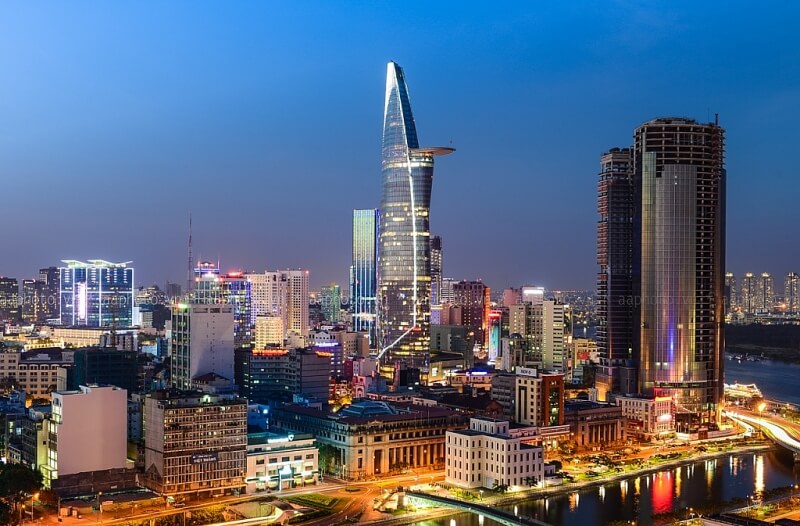Average Salary in Ho Chi Minh City vs. Hanoi

Aug 25, 2025
Last updated on Nov 28, 2025
In 2025, average salaries in HCMC and Hanoi show nearly identical baseline numbers, but the strategies behind these figures tell a much more complex story. HCMC is leading the talent race with aggressive bonus policies and breakthrough compensation strategies, while Hanoi has taken a different approach—focusing on stability and sustainable development. When comparing Ho Chi Minh City vs Hanoi in workforce characteristics and salary approaches, the differences are clear. HCMC drives business, startups, services, and fintech; Hanoi excels in stability, especially in government, research, and education. To build effective HR strategies, companies need to understand these differences and adapt their policies to each local market.

Key takeaways
- While average salaries in HCMC and Hanoi are nearly the same, HCMC clearly leads in executive pay and bonus structures
- HCMC competes through speed and breakthrough financial packages, while Hanoi focuses on stability and long-term talent development
- The 2025 talent war has moved beyond base salary increases to “total compensation” strategies that include bonuses, benefits, and career development
- The big gap between what employees expect for salary increases and what companies can actually deliver is a strategic risk that leaders must manage
Average income in Hanoi and HCMC both beat Vietnam’s national average salary. However, income growth in HCMC has slowed in recent years compared to other areas, with Hanoi quickly “catching up.” Vietnam’s two biggest economic centers are shifting from base salary increases to total compensation strategies, a recent trend in the labor market.
Average salary levels in HCMC
The average salary in HCMC is 9.7 million VND/month (approx. 388 USD). This number reflects the general market but doesn’t show the true characteristics of the country’s largest job market. As the economic hub and financial center, HCMC has high demand for quality talent in services, technology, finance, and startups.
High living costs here also push salaries up, with the minimum wage for Region I in central districts at 4,960,000 VND/month (approx. 198 USD). Salary differences by industry in HCMC are sharp:
Highest salary segments:
- Information Technology: 20-70 million VND/month (approx. 800-2,800 USD) (senior experts can exceed 100 million/approx. 4,000 USD)
- Finance – Banking: 35-80 million VND/month (approx. 1,400-3,200 USD)
- Project Management: 35-80 million VND/month (approx. 1,400-3,200 USD)
Lowest salary segments:
- General labor, basic services: ~4.96 million VND/month (approx. 198 USD)
- Unskilled workers: ~4.96 million VND/month (approx. 198 USD)
HCMC is becoming a magnet for international tech experts and startup talent. Foreign companies and multinational corporations here pay competitive salaries to keep workers with market skills and international experience.
Average salary levels in Hanoi
The average salary in Hanoi is 9.8 million VND/month (approx. 392 USD). Slightly higher than Vietnam’s national average salary and almost equal to HCMC. As the government and education center, Hanoi’s salary structure shows more stability, focused on the public sector, education, and professional services.
The minimum wage for Region I matches HCMC at 4,960,000 VND/month (approx. 198 USD) in inner districts. Hanoi’s salary structure by industry also shows clear differences but with unique features:
Highest salary segments:
- Information Technology and Finance – Banking: 18-60+ million VND/month (approx. 720-2,400+ USD) (senior management can exceed 80 million/approx. 3,200 USD)
- Marketing and Communications: 25-45 million VND/month (approx. 1,000-1,800 USD) (management positions)
Lowest salary segments:
- General labor: ~4.96 million VND/month (approx. 198 USD) (inner districts)
- Suburban and remote areas: 4.41-3.86 million VND/month (approx. 176-154 USD)
Hanoi’s job market focuses heavily on state-owned companies, public institutions, and public service companies. This creates a stable job market with less salary changes compared to HCMC.
Comparing average salaries between HCMC and Hanoi
Average income in Hanoi and HCMC typically exceed national averages, though recent changes show this gap is narrowing significantly. With 2025 regional minimum wage, salaries have converged between the two cities, ranging around 9.7-9.8 million VND/month (approx. 388-392 USD) for general and office positions. The 2025 minimum wage in both HCMC and Hanoi is 4,960,000 VND/month (approx. 198 USD) or 23,800 VND/hour (approx. 0.95 USD) in central areas.
The highest-paying industries in both cities are information technology, finance-banking, project management, and business management. Both cities have diverse, skilled workforces, but with different strengths:
- HCMC excels in market skills, international business, and adapting to highly competitive environments.
- Hanoi is strong in social sciences, research, education, and has advantages in highly educated human resources with experience in administration and government management.
17% difference in foreign and large private company sectors
The 2024 salary and benefits survey report by Talentnet (covering over 594 foreign companies, 59 local companies with more than 551,380 workers) shows HCMC still pays 17% higher salaries than Hanoi for jobs in foreign and large private company sectors.
This difference shows what each market is like. In private business, management, technology, and engineering, HCMC tends to pay about 17% more than Hanoi for similar jobs, especially clear in foreign and private companies.
But when looking at the whole job market including both public and private sectors, this gap has gotten much smaller. This shows Hanoi’s big progress in improving pay policies and attracting talent, especially as companies increasingly value stability and professional work environments.

2025 compensation trends in HCMC and Hanoi
2025 marks an important shift in how companies approach pay strategy. Instead of focusing mainly on base salary increases, employers are moving toward a more complete and flexible model that combines multiple factors to create competitive advantages for workforce models in the talent war.
1. Slower base salary growth
According to reports from Talentnet and international HR research organizations, salary growth rates in HCMC and Hanoi during 2024-2025 reached approximately 9.5% per year.
Although 82% of companies plan salary adjustments in 2025, there’s a large gap between expectations and reality. Employees want 20-30% salary increases, but the reality shows most only receive under 10% per year. Cases of salary increases above 20% are becoming increasingly rare, reserved only for strategic positions or roles with talent shortages.
This difference creates a clear gap between employee expectations and companies’ actual financial capacity. In a rapidly shifting market requiring strict cost control, many companies have redirected their investment:
- 76% focus on more competitive bonus schemes
- 67% invest heavily in internal development training
2. HCMC bonus strategy: competing through breakthrough approaches
Average Tet bonus: 12.7 million VND/person (approx. 508 USD). This number is nearly 3 times higher than Hanoi (4.5 million VND/approx. 180 USD), showing not only strong financial ability but also aggressive competitive strategy in the job market.
HCMC’s job market features fierce competition, forcing companies to offer attractive bonus packages to keep high-quality talent and attract new professionals. Business leaders here actively update and create diverse benefit packages, consistently leading national standards and driving new trends in employee pay.
Key trends:
- Foreign companies and large corporations lead salary/bonus increases for strategic positions
- Local companies shift toward flexible bonus policies and personalized benefits
- Training and talent development programs replace traditional base salary models
To support this change, many companies are looking into professional payroll services to improve salary management processes.
3. Hanoi compensation strategy: focus on stability and sustainable development
Highest bonus: 311 million VND (approx. 12,440 USD) (foreign sector)
Unlike HCMC, Hanoi’s market shows a different and more sustainable approach. Companies, especially in government and education sectors, focus on long-term benefits, job security, and extensive training opportunities to build loyal, long-term teams rather than competing through dramatic bonus spikes.
Hanoi companies put special focus on sustainable talent development. Instead of focusing on short-term salary policies, they invest in long-term team development through intensive training programs, clear advancement paths, and stable work environments.
Forecast: Salary alignment between the two cities will continue alongside standardized company management, healthy competition, and high-quality talent movement. This matches trends in Vietnam’s fastest-growing salary industries documented in job market reports.
Analyzing average salaries in HCMC compared to Hanoi shows that the 2025 talent war has evolved from base salary increases to a more complex and diverse total strategy. CEOs need to build flexible pay policies customized to local markets and talent segments. Focus on employee expectation surveys, smoothly combining salary, bonuses, employee benefits, and personal development paths to optimize human capital investment and create sustainable competitive advantages.

Solve your HR problems!
6th Floor, Star Building, 33 Mac Dinh Chi, Saigon Ward, Ho Chi Minh city, Vietnam




